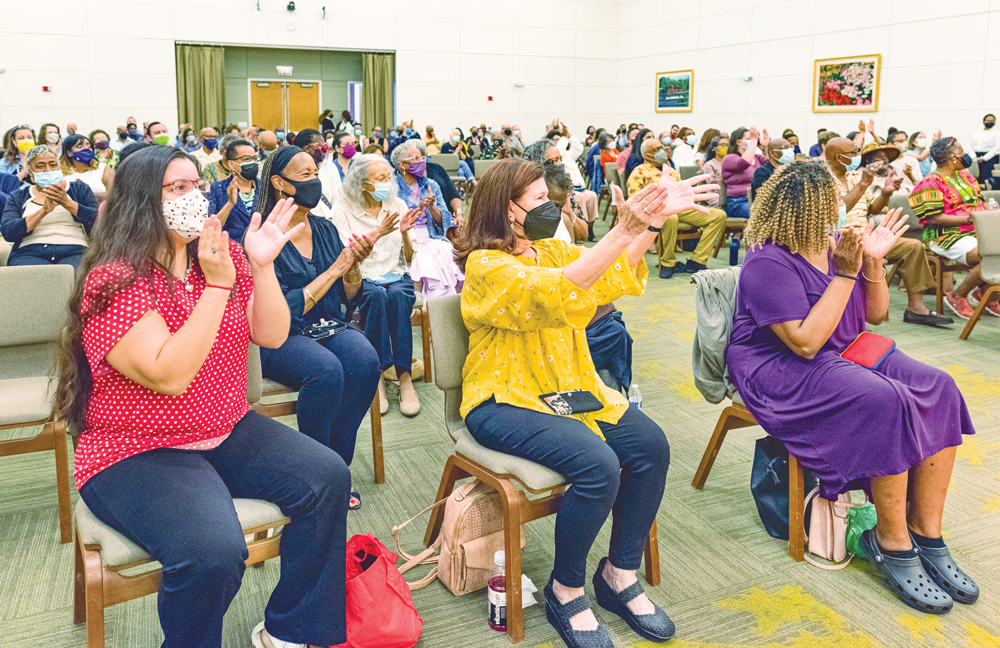We sometimes aren’t aware that everyone doesn’t view things exactly as we do. Two people can look at the same thing or event and see something entirely different. We may be aghast at a person’s failure to see the obvious, but the feeling may be mutual.
Though we like to think of reality, truth and facts as indisputable, they’re often open to interpretation. People filter everything they see, hear, touch, taste, smell and think through their unique perceptive lenses. Experiences, ingrained beliefs and, from the Buddhist view, their karma—the sum of one’s actions over countless lifetimes until now—form these lenses.
Buddhism prescribes the lens of wisdom as the most accurate and valuable way to view reality. Wisdom in this context can be described as the capacity to assess reality unobstructed by prejudices or self-interests. In Nichiren Buddhism, the ultimate relationship between wisdom and reality is “the fusion of reality and wisdom.” Nichiren Daishonin explains:
Reality means the true nature of all phenomena, and wisdom means the illuminating and manifesting of this true nature. Thus when the riverbed of reality is infinitely broad and deep, the water of wisdom will flow ceaselessly. When this reality and wisdom are fused, one attains Buddhahood in one’s present form.[1]
In general, “wisdom” refers to the cognitive capacity of the mind, and “reality,” the object of that cognition, that is, whatever we focus our attention on.
Become Indispensable Where You Are
Second Soka Gakkai President Josei Toda explained that we can apply this concept to our daily lives:
If being a grocer is your “reality,” then to really work hard to make your business prosper is manifesting the “fusion of reality and wisdom.”[2]
Ikeda Sensei further explains that our role in life is our “reality”:
It is the light of “wisdom” that causes this reality to shine. Effecting the perfect fusion of reality and wisdom in our own lives means becoming indispensable wherever we are.[3]
The broader our wisdom, the more profoundly we can grasp the import of our reality.
A Buddha is someone who possesses the highest form of wisdom—the wisdom to comprehend the profound, sublime and eternal law that pervades the entire universe, the Mystic Law.
Because the Mystic Law is vast, deep and eternal, the wisdom to fathom it must accordingly be immense and profound.
With such wisdom, we can freely grasp and make best use of the Mystic Law to create an indestructible state of happiness for ourselves and for others.
The Gohonzon: An Expression of the Fusion of Reality and Wisdom
Nichiren Daishonin awakened to the wisdom to perceive the eternal life state of Buddhahood, which he taught was the Mystic Law, Nam-myoho-renge-kyo.
He inscribed this state of life in the form of the Gohonzon[4] to which Nichiren Buddhists chant. The Gohonzon graphically embodies the fusion of reality and wisdom.
We may not consider ourselves exceptionally wise, and Buddhism teaches that, these days, no one is truly wise by nature. Fortunately, it also teaches that we ordinary people can “substitute faith for wisdom.”[5] That is, when we make the Gohonzon our “reality” and chant Nam-myoho-renge-kyo to it with faith, the life state of the Buddha embodying the fusion of reality and wisdom emerges in our lives.
Sensei explains:
In essence, everyone is a Buddha. That is our “reality.” It is the light of wisdom that causes the world of Buddhahood in our lives to shine. Our Buddhahood starts shining when we have the wisdom to realize we are Buddhas. This is the fusion of reality and wisdom. From our standpoint, according to the Buddhist principle of “substituting faith for wisdom,” the “wisdom” component in the fusion of reality and wisdom, means “faith.” That we possess the world of Buddhahood is the objective truth, the “reality,” of our lives. Faith causes this reality to shine in actuality.[6]
In a nutshell, the surest way to fuse reality and wisdom is to take the time to chant Nam-myoho-renge-kyo to the Gohonzon. As we chant each day about our troubles and aspirations, we can tap our Buddhahood and find the wisdom for using everything we face to elevate and enrich our lives.
—Prepared by the SGI-USA Study Department
References
- “The Essentials for Attaining Buddhahood,” The Writings of Nichiren Daishonin, vol. 1, p. 746. ↩︎
- The Wisdom of the Lotus Sutra, vol. 3, p. 17. ↩︎
- Ibid. ↩︎
- For more on the Gohonzon, see Aug. 6, 2021, World Tribune, pp. 6–7. ↩︎
- See “On the Four Stages of Faith and the Five Stages of Practice,” WND-1, 785. ↩︎
- The Wisdom of the Lotus Sutra, vol. 3, p. 18. ↩︎
You are reading {{ meterCount }} of {{ meterMax }} free premium articles

